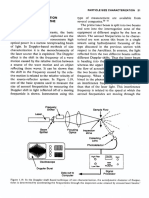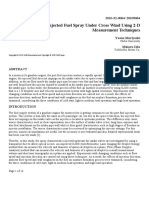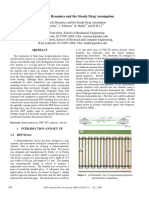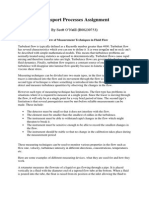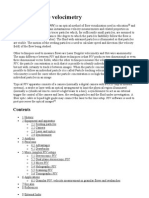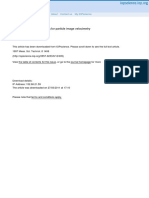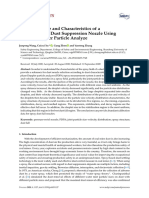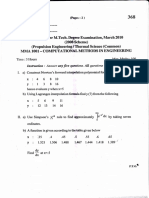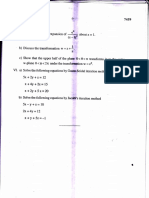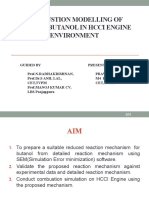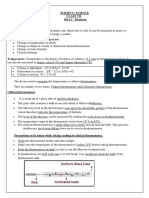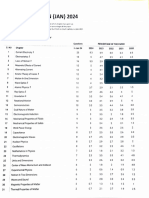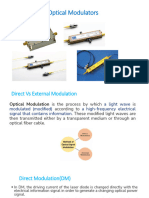0% found this document useful (0 votes)
282 views3 pagesPhase Doppler Particle Analyzer
The Phase Doppler Particle Analyzer (PDPA) uses laser Doppler effect to simultaneously measure the size, velocity, and concentration of spherical particles like liquid droplets. It is a point sampling instrument that focuses on portions of a spray to obtain a composite sample. When a droplet passes through the intersecting laser beams, it scatters light that forms an interference pattern sweeping at a Doppler frequency proportional to velocity and a spatial frequency inversely proportional to size. The PDPA provides a non-intrusive means of measurement that is not subject to errors from light attenuation and requires no calibration.
Uploaded by
Praveen H Praveen HCopyright
© © All Rights Reserved
We take content rights seriously. If you suspect this is your content, claim it here.
Available Formats
Download as DOCX, PDF, TXT or read online on Scribd
0% found this document useful (0 votes)
282 views3 pagesPhase Doppler Particle Analyzer
The Phase Doppler Particle Analyzer (PDPA) uses laser Doppler effect to simultaneously measure the size, velocity, and concentration of spherical particles like liquid droplets. It is a point sampling instrument that focuses on portions of a spray to obtain a composite sample. When a droplet passes through the intersecting laser beams, it scatters light that forms an interference pattern sweeping at a Doppler frequency proportional to velocity and a spatial frequency inversely proportional to size. The PDPA provides a non-intrusive means of measurement that is not subject to errors from light attenuation and requires no calibration.
Uploaded by
Praveen H Praveen HCopyright
© © All Rights Reserved
We take content rights seriously. If you suspect this is your content, claim it here.
Available Formats
Download as DOCX, PDF, TXT or read online on Scribd
/ 3











